Whether you're commuting to work, taking a stroll with your pups (or kitty), or jogging in Central Park, wearing shoes without arch support can be the endgame for your feet. Without it, arch pain, strained muscles, knee pain, and collapsed arches (oh my) are likely to ensue. Luckily, there are plenty of shoes out there that are designed to give your precious arches the TLC they deserve. To learn more about how to find sneakers with arch support, we tapped an orthopedic surgeon and multiple podiatrists to garner their input. Explore their tips below, plus 8 quality pairs to try for yourself.
- Asim Sayed, DPM, AACFAS, board-certified foot and ankle surgeon at Susan B. Allen Memorial Hospital
- Jacob Hascalovici, MD, PhD, board-certified pain specialist and chief medical officer at Clearing
- Nam Tran, DPM, foot and ankle surgeon based in Dallas, Texas
- Nelya Lobkova, DPM, board-certified podiatrist and founder of Step Up Footcare in New York City
Best sneakers with arch support, at a glance
- Best overall: Hoka, Clifton 9, $145
- Best for running: Asics, Gel-Kayano 30, $160
- Best versatile: New Balance, Fresh Foam X 1080v13, $165
- Best for plantar fasciitis: Vionic, Limitless Sneaker, $50
- Best slip-ons: OOFOS, OOMG Eezee Low Shoe, $140
- Best cross-training: Lululemon, Chargefeel 2 Workout Shoe, $138
- Best for road running: Brooks, Ghost 16, $140
- Best removable insoles: Sketchers, Arch Fit Glide, $95
Why is arch support important?
Before we dive in, why is arch support so important? For starters, it can prevent and manage foot injuries, according to Nam Tran, DPM, a foot and ankle surgeon based in Dallas. "Arch support helps aid in achieving the proper biomechanical alignment of the foot that is needed for pain free walking," Dr. Tran says. "When our joints are positioned properly, it greatly decreases the likelihood of early onset arthritis, overuse injuries, and ligament/tendon injuries." The proper shoes can even help with knee pain.
{{post.sponsorText}}
Not all shoes are constructed equally, so before you swipe your credit card, Dr. Tran recommends checking out your inserts first. Supportive shoes will have inserts that have filler materials in the arch area. "If the insert does not have this and the inner floor of the shoe is flat, it is very possible that the shoe contains no arch support," he adds. So to prevent sole pain, check out these sneakers for foot pain.
What should you look for in a sneaker with arch support
"When looking for sneakers that support the arch, look for an insole that closely contours the bottom of your foot. If possible, try and find a sneaker with a deep heel cup to add stability and support. In severe cases, you can look into orthotics for even more comfort and support," says podiatrist Asim Sayed.
You also need to take into consideration what terrain you're going to be on and what distance you're covering, says Jacob Hascalovici, the Chief Medical Officer at Clearing and a board-certified pain specialist. "If you're running long distance, you may want more structured support in your sneakers" he says. "You’ll also want to consider whether your natural arch is high, 'normal,' or low. If you have low arches, you might want to experiment with stability shoes. If you have normal or high arches, more neutral sneakers may better fit your needs."
There are also different styles you can choose from. For a lace-up design, consider Hoka, Clifton 9. For slip-on sneakers, OOFOS OOMG Eezee Low Shoe is an easy-to-wear option. Some shoe brands with arch support include Hokas, Asics, New Balance, and more. And according to Dr. Tran, Vionic’s Limitless Sneaker is one of the best shoes for plantar fasciitis. And if you'll be wearing your kicks regularly, make sure you know how to wash sneakers (you’re more likely to wear your shoes when they’re clean!).
Ahead, you'll find top expert-recommended sneakers, so you can keep foot pain at bay. (And for those dressier days, check out some heels with arch support, too).
Shop 8 of the best sneakers with arch support
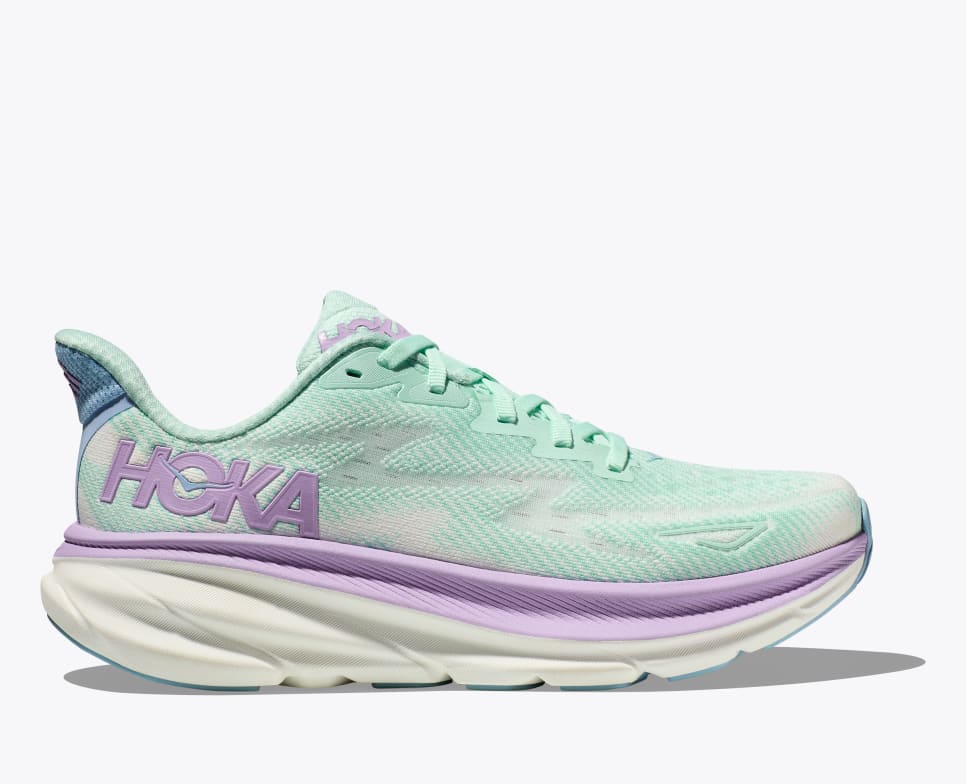
Sizes available: 5-12, regular and wide
Receiving the seal of approval from the APMA for advancing good foot health, the Hoka Cliftons constantly rank on top. The newest iteration to hit the market, the Clifton 9s are lightweight, breathable (thank you mesh), and have a cushioned and responsive midsole that pads your feet during impact. All in all, “the Clifton is a great shoe that offers support as well as overall cushion,” says Dr. Tran.
Colors and patterns available: 14
Weight: 7.3 oz
Heel-to-toe drop: 5 mm
Pros:
- Lightweight
- Breathable
- Have EVA foam midsole
- Rocker-like sole for walking and running
Cons:
- Cushion may be too squishy for some
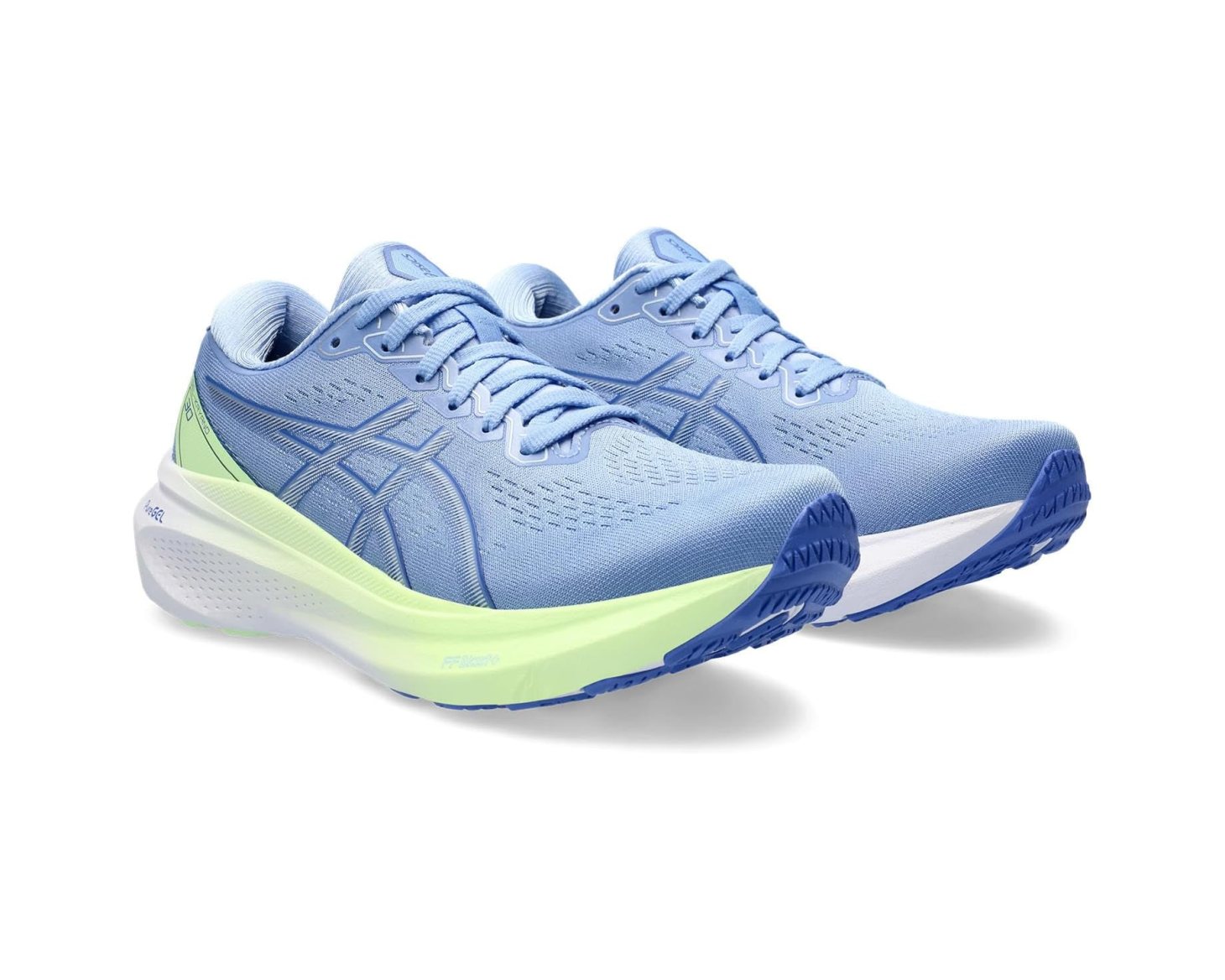
Sizes available: 5-13
If your feet tend to roll inwards or you have fallen arches, Dr. Tran recommends the Asics Gel-Kayano. This lightweight shoe features the brand’s signature Litetruss structure, which prevents your feet from twisting and turning during movement, and a foam footbed that cushions your arches. Even more, the external heel counter cradles your feet and the knit outer layer keeps air flowing through (see ya, sweaty feet).
Colors and patterns available: 10+
Weight: 9.2 oz
Heel-to-toe drop: 10 mm
Pros:
- Absorbs shock
- Breathable
- Designed for overpronators
Cons:
- Pricier option
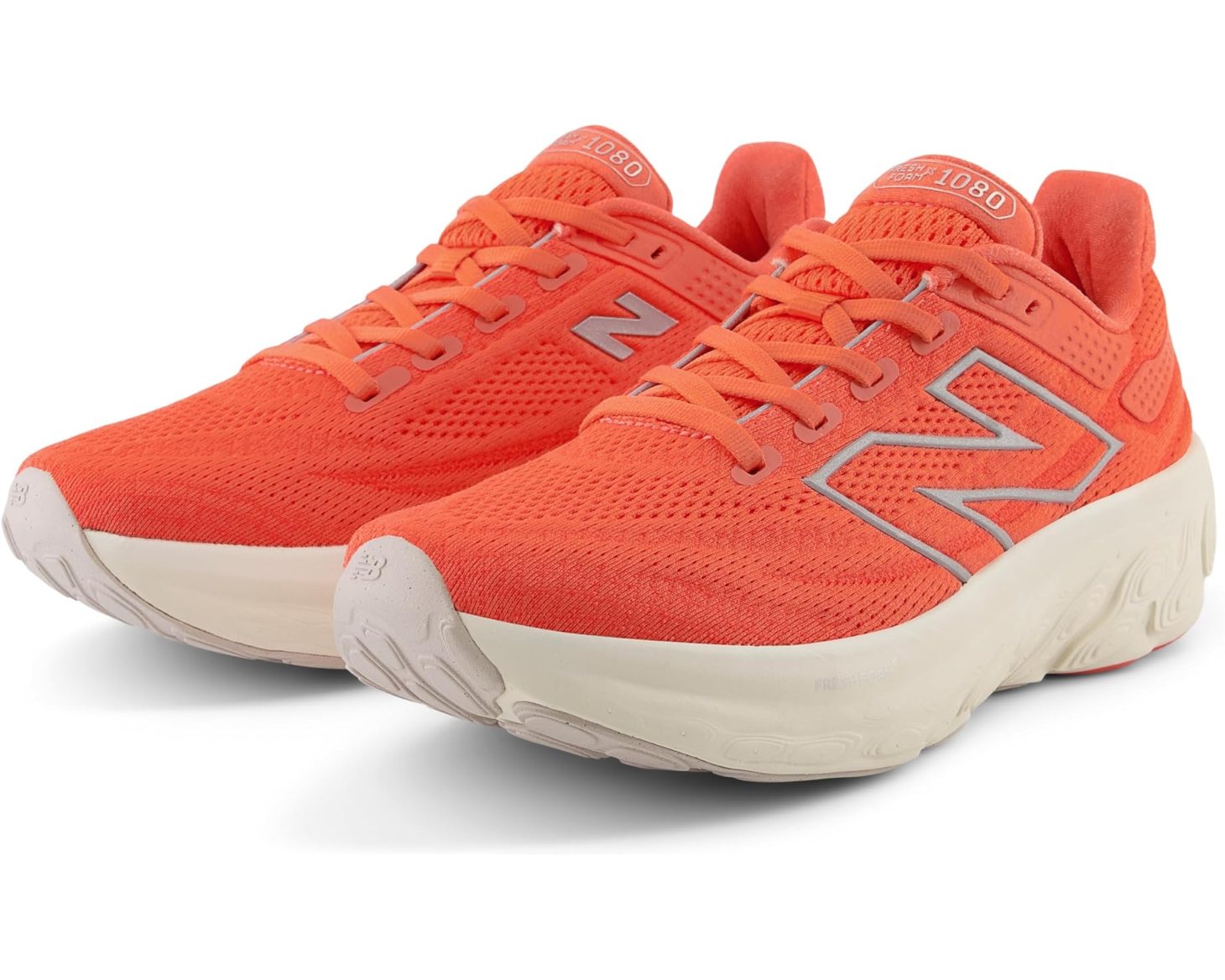
Sizes available: 5-13, standard, wide, and x-wide
Lightweight, breathable, and supportive, the New Balance 1080s are “a great all-around shoe with lots of cushion and accommodation,” says Dr. Tran. The midsole is constructed out of foam, absorbing the shock so your joints and arches don’t have to, and the outer layer is constructed out of knit (so lightweight and breathable, that it feels like second skin). It comes in classic colors like white and black as well as more vibrant colorways.
Colors and patterns available: 13
Weight: 7.3 oz
Heel-to-toe drop: 6 mm
Pros:
- Available in a variety of widths
- Has cushioned midsole
- Breathable
Cons:
- Sizing runs large
- Pricier option
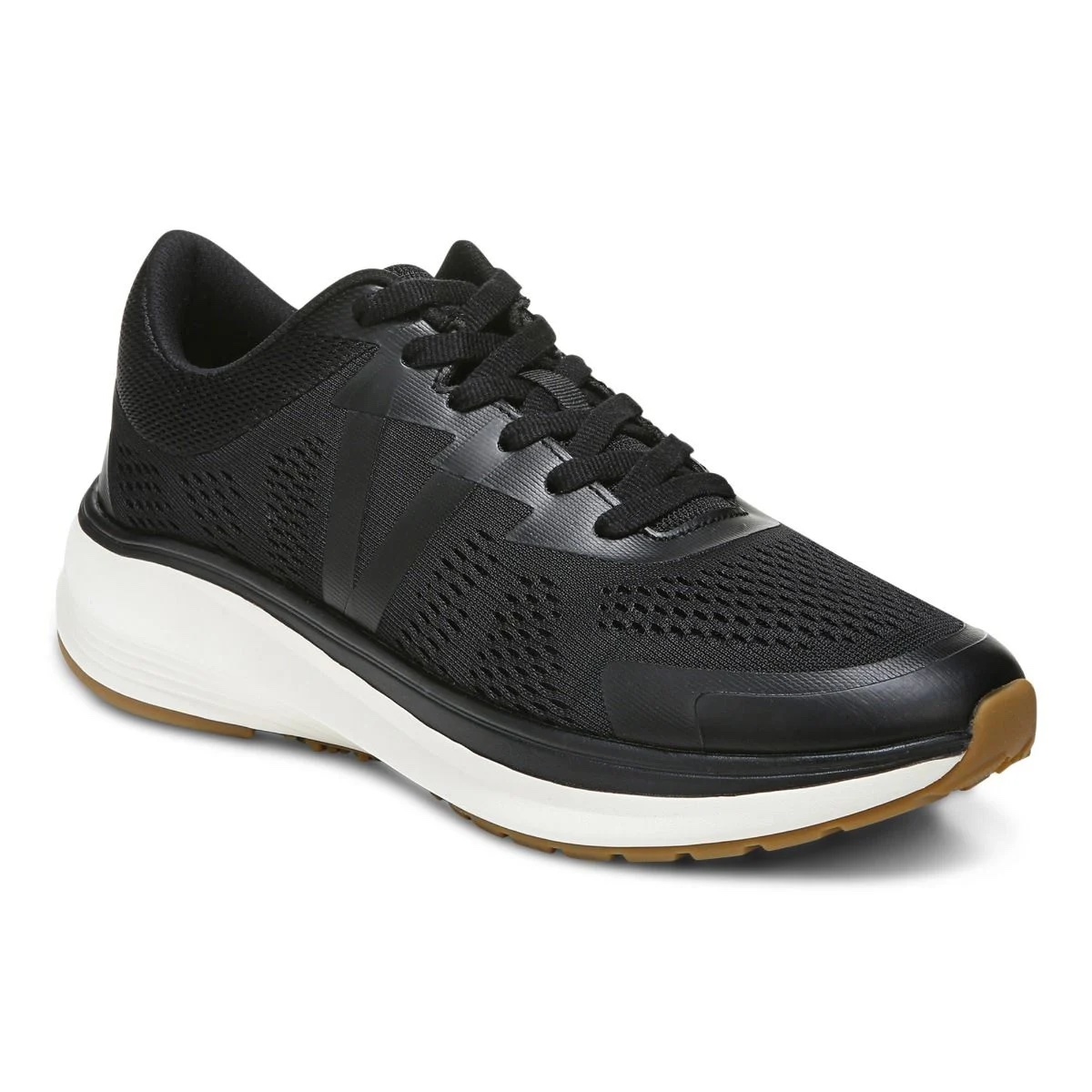
Sizes available: 5-11
With a reinforced heel, cushioned sole, and breathable mesh, there’s no limit on the distance you can go with these kicks. The soles were engineered to hug and support the natural curvature of your arches, and the shoe has a motion forward design to propel you into your next step, making it a great option, especially “for patients that may be suffering from painful conditions like plantar fasciitis,” says Dr. Tran. Plus, it has a durable rubber sole to maintain traction with every step.
Colors and patterns available: 4
Weight: n/a
Heel-to-toe drop: n/a
Pros:
- Ideal for walking and cross-training
- Breathable
- Rubber sole
Cons:
- May not be ideal for people with wide feet

Sizes available: 5-12
For a more casual shoe, the OOFOS low shoe can also be a great option for arch support, says Dr. Sayed. These slip-on sneakers are made of a stretchy, canvas-like material, and use proprietary foam to absorb impact. “The OOFOS footbed is designed to cradle your foot arch and provide optimal shock absorption,” he says.
Colors and patterns available: 7
Weight: n/a
Heel-to-toe drop: Not available
Pros:
- Slip-on design
- Great for recovery
- Odor-resistant
- Absorbs impact
Cons:
- May run small for some
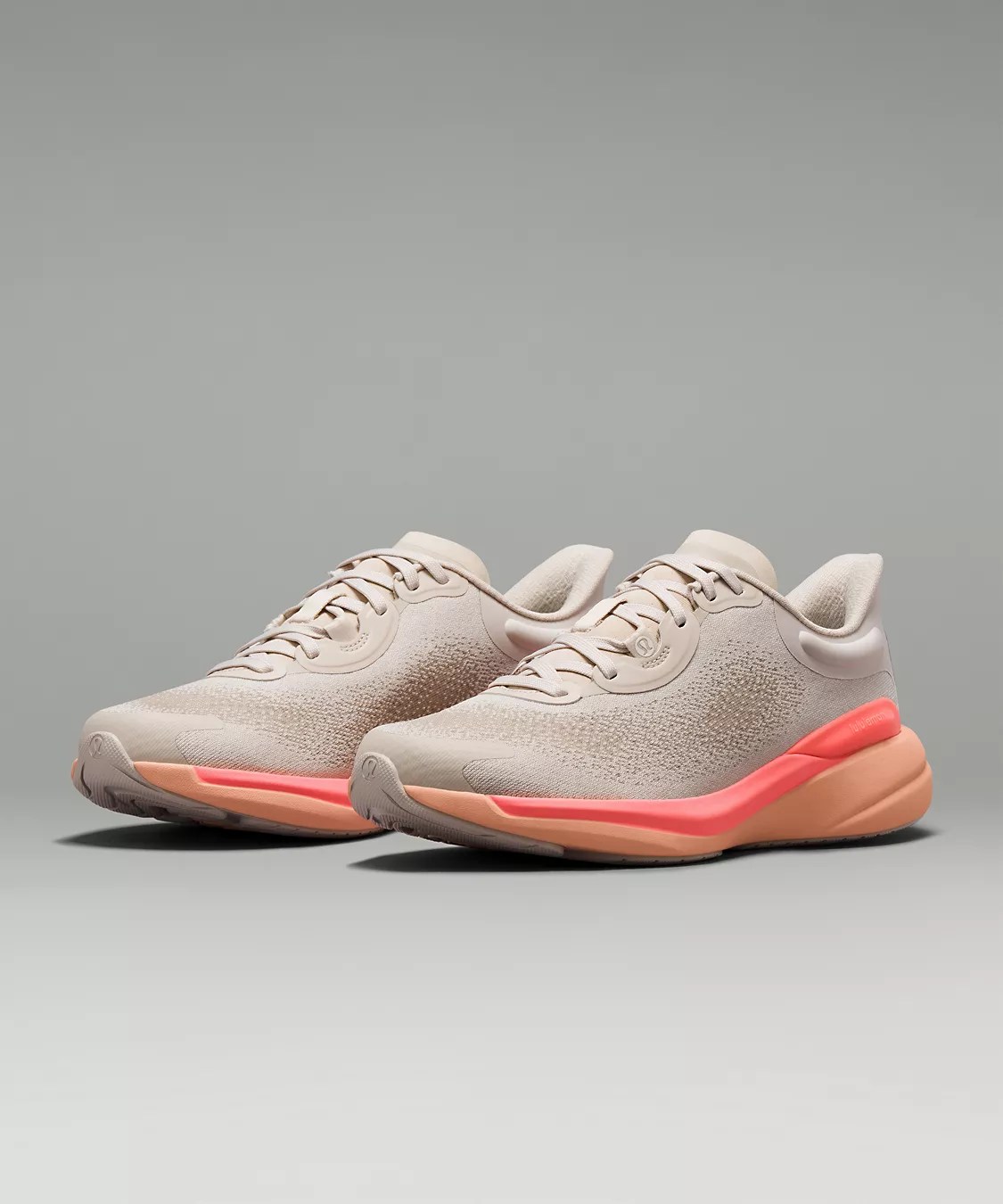
Sizes available: 5-12, in half sizes
These lululemon shoes are a good workout or cross training option, says Dr. Sayed. They have a bouncy and cushioned midsole, a flexible upper, and they’re designed for a female foot. Not to mention, little to no break-in time is required, according to Lululemon shoppers. Whether you’re wearing them for running, training, or walking around, they’ll keep your feet feeling supported.
Colors and patterns available: 4
Weight: 9.1 oz
Heel-to-toe drop: 9.5 mm
Pros:
- Offers support for running and training
- Includes 30-day trial
- Lightweight
Cons:
- Runs small for some

Sizes available: 5-13, in half sizes and four widths
The Brooks Ghost 16 shoes have a lighter foam that makes them feel lightweight yet still cushioned, and are designed to help your feet make smooth transitions on the ground, making them the perfect shoe for hitting the road. The upper is breathable mesh and made partly of recycled materials, too. Road or pavement, the Ghost 16 is here for the ride.
Colors and patterns available: 16
Weight: 8.5 oz
Heel-to-toe drop: 12 mm
Pros:
- Made of recycled materials and water bottles
- Cushioned midsole
- Breathable
Cons:
- May be too roomy for some
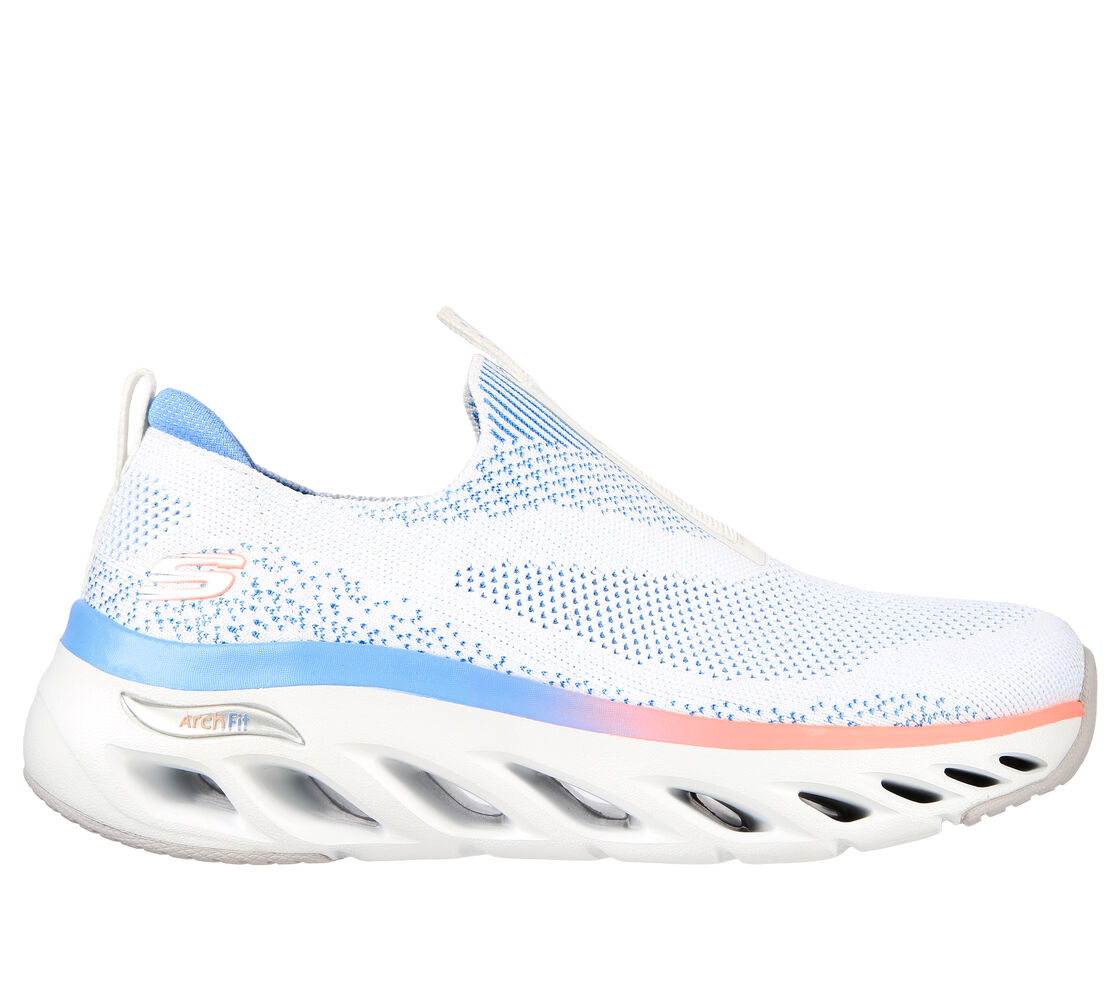
Sizes available: 5-11, in half sizes
Dr. Lobkova recommends the Arch Fit Glide Step for its arch-supporting insole, which is removable and can be replaced with a custom orthotic if you choose. This style boasts foot-friendly features like a cushioned midsole, grippy rubber sole, and breathable mesh. Even more, the entire shoe is crafted out of 100 percent vegan materials.
Colors and patterns available: 2
Weight: n/a
Heel-to-toe drop: n/a
Pros:
- More affordable compared to others on the list
- Removable insole
- Rubber sole
Cons:
- May fit narrow for some
How to choose the right sneakers with arch support for you
- Your activity type: If you're looking for a good shoe for walking and standing all day, any of the picks on this list should suit your needs. If you're hoping to run in your sneakers, you'll want to be sure the shoe ticks additional boxes beyond offering good arch support. Consider the toe-to-heel drop and the overall cushion in the shoe, as those factors will definitely come into play as you run.
- Special sizing: If you have narrow or extra wide feet, you'll want to opt for a pair that comes in your required width. Some shoes tend to run wide or narrow, but it's always wise to play it safe and go for a shoe that caters to your unique foot shape as much as possible.
- Style: Of course, style comes into play when choosing shoes. Some of the brands on our list offer more variety in their colorways than others—if color and patters are important to you, the Brooks, Hoka, and Asics shoes on our list offer the most versatile color options.
Frequently asked questions
1. Do Hokas, Brooks, or New Balance shoes have good arch support?
They can, but it depends on the style you choose. Nelya Lobkova, DPM, a podiatrist based in New York, says that arch support can only be provided by the insole of the shoe. "Arch support appears as a supportive bump inside of the insole around the area of the midfoot/arch," she says. If your shoe lacks arch support, placing an over-the-counter or custom-made orthotic can help. "The orthotics would replace the thin and soft removable existing insole in the sneaker," adds Lobkova.
2. Do podiatrists recommend Hoka shoes?
In addition to receiving American Podiatric Medical Association (APMA) seal of acceptance, "many podiatrists recommend Hoka One sneakers," says Dr. Lobkova. "They offer a lot of cushioning, which is great for high-impact activities, such as running." Dr. Lobkova adds that Hoka One sneakers are great for city dwellers because they have rocker-bottom technology, which helps with efficient walking. Not to mention, they're super lightweight.
3. Are Skechers approved by podiatrists?
Podiatrists approve many Skechers styles now. When the brand launched back in 1992, Dr. Lobkova says the sneakers were very flexible, offering no midsole rigidity with minimal cushioning—which made them unpopular in the podiatry community. "We commonly saw pathology such as overuse injuries and fractures when people wore Skechers sneakers," says Dr. Lobkova. "However, it seems to me that Skechers sneakers have evolved with the changing trends. There are Skechers styles that offer more midsole rigidity, cushioning, and even a rigid heel counter."
Loading More Posts...